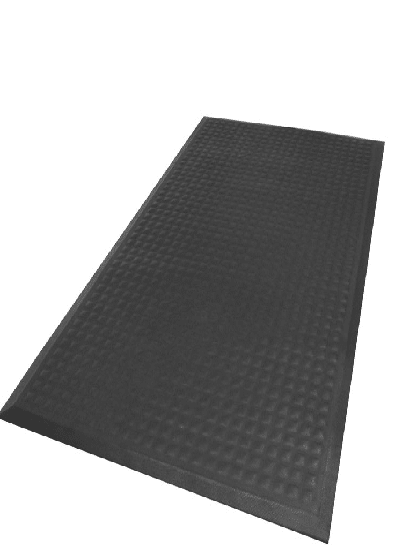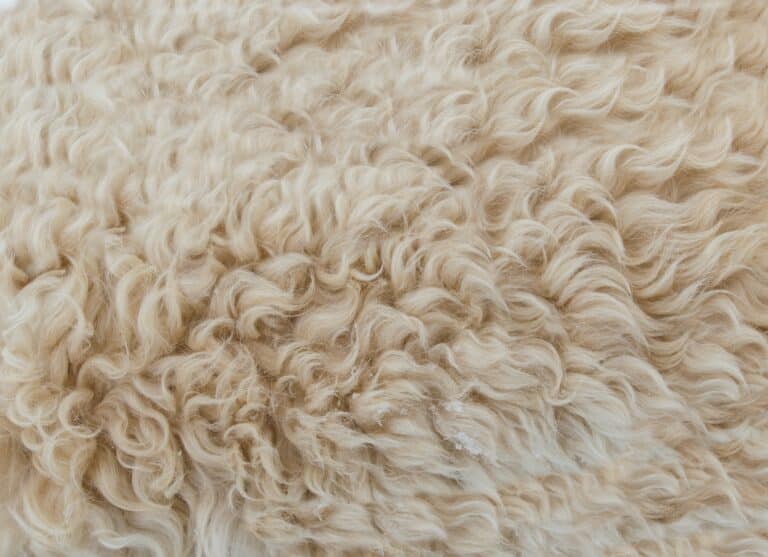Floor Mats: The Barrier, Protector, and Support System for Your Space”
What Are Floor Mats, Exactly?
Floor mats are a covering placed on the floor to protect it from dirt, debris, moisture, and wear and tear. They are typically made from various materials, including rubber, vinyl, carpet, and natural fibers. They come in various sizes, shapes, and designs to suit different needs.
Floor mats can be made differently, depending on the material and how they will be used. For example, rubber mats are usually made through vulcanization, which involves heating natural or synthetic rubber to a high temperature to create a durable, non-slip surface. Carpet mats are typically made by bonding a carpet layer to a rubber or vinyl backing. In contrast, vinyl mats are made from PVC plastic moulded into a specific shape.
Materials Used for Different Types of Mats:
Different floor mats use different materials based on their intended use. For example, rubber mats are used in high-traffic areas where durability and slip resistance are important. Carpet mats are used in both businesses and homes because they can catch dirt and water. Vinyl mats are used for their versatility and ease of cleaning, making them popular in kitchens and bathrooms.
Different Uses of Floor Mats:
Floor mats have a wide range of uses, including:
- Protecting floors from damage and wear and tear.
- Reducing the risk of slips and falls by providing traction and slip resistance.
- Trapping dirt and moisture to keep floors clean and dry
- Providing comfort and support in high-traffic areas
- Enhancing the appearance of a room with decorative designs and colors
Floor mats are one of the most commonly used accessories in vehicles and homes; they are also used in commercial settings. They are designed to protect the floor from dirt, water, and other elements that can cause damage. They also enhance the room’s appearance and comfort those who walk on them. This research paper will provide an in-depth analysis of floor mats, including their types, benefits, and maintenance.
Floor Mats Come in a Variety of Styles:
Different floor mats are available on the market, each designed for specific purposes. Below are some of the most common types of floor mats:
Entrance Mats:
are designed to be put at the front door of a building to keep dirt, debris, and water from getting inside. They are usually rubber or nylon and have textured surfaces that trap dirt and moisture.
Anti-Fatigue Mats:
are made to help people who have to stand for long periods feel better. They are made of rubber, vinyl, or foam and have a cushioned surface that reduces fatigue and strain on the feet, legs, and back.
Car Mats:
Car mats are designed to protect the floor of a vehicle from dirt, mud, and water. They are usually made of rubber or carpet. They are available in different sizes and shapes to fit different models of cars.
Kitchen Mats:
Kitchen mats are designed to comfort those who stand in the kitchen for long periods. They are usually made of foam or rubber and have a cushioned surface that reduces fatigue and strain on the feet and legs.
Gym Mats:
are made to cushion and support your body during exercises and other physical activities. They are usually made of foam or rubber and have a non-slip surface to prevent injuries.
How Do Floor Mats Function?
Floor mats work by putting a barrier between the floor, people walking on it, or other things that could damage it. They serve as a barrier to prevent dirt, moisture, and debris from being tracked onto the floor and help to prevent scratches and scuffs caused by shoes or other objects.
Floor mats can protect the floor and make it safer by making it less likely that someone will slip and fall. Mats with slip-resistant backing or textures help prevent people from slipping on wet or slippery floors, reducing the likelihood of accidents and injuries.
Floor mats can also provide comfort and support, especially in areas where people stand for extended periods. Anti-fatigue mats are designed to provide cushioning and support for people who stand for long periods, reducing the strain on their legs, backs, and feet.
Different types of mats are designed to work in different ways based on their specific purpose. For example, entrance mats are made to catch dirt and water, while gym mats are used a lot and take a lot of wear and tear.
Overall, floor mats provide a barrier between the floor and foot traffic or other elements while offering safety, comfort, and support. You can ensure that it works well and lasts longer by selecting the right type of mat for your needs and taking proper care of it.
Advantages of Using Floor Mats
Using floor mats has several benefits, some of which are discussed below:
Protects The Floor:
Floor mats are designed to protect the floor from dirt, moisture, and other elements that can cause damage. This helps extend the floor’s life and reduces the need for costly repairs.
Increases Safety:
Floor mats with non-slip surfaces make it less likely that someone will slip and fall, especially in areas with many people. They can also help reduce fatigue and strain on the feet, legs, and back.
Improve the Look:
Floor mats can improve a room or car by adding colour, texture, and design. They can also be customized to fit specific design preferences.
Easy to Clean:
Floor mats are easy to clean and maintain; they can be vacuumed or washed with soap and water. This makes them a convenient option for busy households and commercial settings.
Maintenance of Floor Mats:
Proper maintenance of floor mats is important to ensure their longevity and effectiveness. Below are some maintenance tips for floor mats:
Vacuum or Shake the Mats:
Regularly vacuum or shake the mats to remove dirt and debris that can cause damage to the floor or reduce the mat’s effectiveness.
Wash the Mats:
Wash the mats with soap and water, or follow the manufacturer’s instructions for cleaning. This helps to remove stubborn stains and dirt that cannot be removed by vacuuming or shaking.
Dry the Mats:
Ensure they are completely dry before using them again. Moisture can cause mould and mildew growth and reduce the mat’s effectiveness.
Replace Old Mats:
Old or worn-out mats should be replaced with new ones for the best protection and effectiveness.
Reasons You Need Floor Mats
Floor mats are an important accessory for any space, whether a home, a vehicle or a commercial setting. Here are some reasons why you need floor mats and why they are a worthwhile investment:
Floor Mats Protect Your Floors:
Protecting your floors is one of the main reasons you need floor mats. This is especially important in places where many people walk or where dirt and water gathering. Floor mats are a barrier between your floors and the elements, preventing damage and wear and tear.
Preventing Slip and Fall Accidents:
Slip and fall accidents can happen anywhere, but they are particularly common in areas with hard flooring, such as tile, hardwood, or laminate. Non-slip floor mats can help prevent accidents by providing a stable walking surface.
Improves the appearance of a room:
Floor mats can improve the appearance of a room by adding colour, texture, and design. You can choose various styles to match your decor and create a cohesive look.
Comfort:
Floor mats with padded surfaces can help people who stand or walk on hard floors for long periods feel better. This is particularly important in areas like the kitchen, where people spend much time standing and working.
Easy to Clean:
Floor mats are easy to clean and maintain, which makes them a good choice for busy homes and businesses. They can be vacuumed or washed with soap and water to remove dirt and stains.
Saves Money:
By protecting your floors, floor mats can save you money in the long run. Your floors can become damaged or worn without mats, leading to costly repairs or replacements.
Versatile:
Floor mats come in various types and sizes, making them a versatile option for any space. There is a floor mat for every need, from entrance mats to car mats.
Floor mats are a good investment for any space because they protect you, make you feel safe and comfortable, and make your home or business look better. With various types and styles available, floor mats are a versatile solution that can save you time, money, and hassle in the long run.
When to Replace Your Floor Mats?
Floor mats are an important investment for any space. They are crucial in protecting your floors and providing safety and comfort. However, like any other accessory, floor mats will eventually wear out and must be replaced. Here are some signs to look for that indicate it is time to replace your floor mats:
Visible Wear and Tear:
Over time, floor mats can become worn, frayed, or torn, particularly in high-traffic areas. It is time to replace your mats if you notice visible signs of wear and tear, such as holes or threadbare areas.
Fading or Discolouration:
Floor mats can fade or become discoloured over time, especially if exposed to direct sunlight or other environmental factors. If your mats are no longer the same colour they once were, it is time to replace them.
Foul Odors:
Floor mats can absorb dirt, moisture, and debris, leading to unpleasant odours. If your mats emit foul smells even after cleaning, it is time to replace them.
Non-Slip Backing is Worn:
The non-slip backing on floor mats can become worn over time, compromising their effectiveness in preventing slip and fall accidents. If the backing is worn or peeling off, it is time to replace your mats.
Mold or Mildew:
Floor mats exposed to moisture or humidity can develop mould or mildew over time. If you notice mould or mildew growth on your mats, it is time to replace them, as they can be a health hazard.
Safety Concerns:
Floor mats that are no longer effective in preventing slip and fall accidents can pose a safety risk. If your mats are curling up or slipping, it is time to replace them to avoid accidents.
Replacing your floor mats is key to keeping your home safe and healthy, protecting your floors, and ensuring your mats do what they’re supposed to do. By watching for signs of wear and tear, discoloration, odors, and safety concerns, you can determine when to replace your mats and choose new ones that will provide your space’s protection and safety.
Where Shouldn’t You Use Floor Mats?
Floor mats are useful in many places, including homes, offices, cars, and public spaces. However, there are some places where you should not use floor mats, as they can pose safety risks or be ineffective. Here are some examples:
Stairs:
Floor mats should not be used on stairs, which can become a tripping hazard. Mats can shift or curl up, creating an unstable surface that can cause falls.
Wet or Slippery Surfaces:
Non-slip floor mats are designed to provide traction on dry surfaces. However, they can be ineffective on wet or slippery surfaces, such as around pools, showers or bathrooms, or standing water.
High-Temperature Areas:
Floor mats should not be used in areas with high temperatures, such as near stoves, ovens, or fireplaces. Some mats may be flammable, and others may melt or become damaged by heat.
Unstable Surfaces:
Floor mats should not be used on unstable surfaces, such as loose carpets, uneven or sloping surfaces, or gravel. Mats can shift or buckle, creating a tripping hazard and reducing effectiveness.
Areas with Heavy Machinery:
Floor mats should not be used in areas with heavy machinery or equipment, as they can become caught or tangled and create a safety hazard. Using specialized mats or other safety equipment in these areas is important.
Floor mats are a useful accessory that can be used in many places to make them safer, more comfortable, and more protected. However, it is important to use mats appropriately and avoid using them in areas where they can pose safety risks or be ineffective. You can get the most out of mats if you choose the right ones for your space and use them correctly.
Top Safety Tips
When used correctly, floor mats can help keep people safe by making it harder to slip and less likely that they will fall. However, it is important to use mats safely to prevent accidents and injuries. Here are some top tips for mat safety:
Choose the right type of mat:
Different types of mats are designed for different purposes, such as reducing slip and fall accidents or providing comfort and support. Choose mats that are appropriate for your space and their intended use.
Use non-slip mats in high-traffic areas.
Mats with non-slip backing are designed to provide traction and reduce the risk of slip-and-fall accidents. Use these mats in high-traffic areas or where spills and moisture are likely to occur, such as in kitchens or bathrooms.
Maintain clean and dry mats.
Dirty or wet mats can become a safety hazard by reducing their effectiveness or creating a tripping hazard. Regularly clean mats according to the manufacturer’s instructions and dry them thoroughly before using them.
Check that mats are flat and secure. Curling or shifting mats can pose a tripping hazard. Use double-sided tape or other secure fasteners to keep mats in place and ensure they are flat and even.
Remove damaged mats:
Mats that are damaged or worn out can compromise their effectiveness and pose a safety risk. Replace damaged mats immediately to prevent accidents and injuries.
When stepping on or off mats, use caution. Mats at doorways or other transition areas can create a tripping hazard if they are not secured or flush with the surrounding floor. When stepping on or off mats, use caution and make sure they are secure and stable.
Floor mats can help keep you safe if you use them the right way, but it’s important to do so to avoid accidents and injuries. By picking the right mat, keeping it clean and dry, making sure it is flat and stable, and being careful when stepping on or off, you can get the most out of this useful item while minimizing safety risks.
Tips for Finding the Right Floor Mats for You
Floor mats come in various sizes, shapes, materials, and purposes. Choosing the right floor mat for your needs can help you achieve the desired functionality and protection. Here are some tips for finding the right floor mat for you:
Determine the purpose:
The first step in choosing the right floor mat is to determine its purpose. Consider what you need the mat for. Do you need a mat for slip resistance or to reduce standing fatigue? Are you looking for a mat to protect your floors from dirt and debris or to add aesthetic value to your space?
Consider the material:
Floor mats can be made from various materials, such as rubber, vinyl, carpet, or foam. The material you choose will depend on the purpose of the mat and the environment in which it will be used. For example, rubber mats are great for areas with water or moisture. In contrast, carpet mats are suitable for indoor use where aesthetics and comfort are a priority.
Determine the size and shape:
Floor mats come in various sizes and shapes. Measure the area where the mat will be placed and choose a mat that fits the space. For example, a runner mat may be appropriate for a hallway. In contrast, a larger mat may be needed for an entryway.
Look for durability:
Floor mats can take a lot of wear and tear, especially in high-traffic areas. Look for mats that are durable and can withstand heavy use. Check the manufacturer’s specifications for the mat’s thickness, weight, and warranty to ensure it is built to last.
Consider the ease of cleaning:
Floor mats can get dirty quickly, especially in areas where dirt, dust, and debris are prevalent. Look for mats that are easy to clean and maintain. Mats made from machine washable or easily wiped clean materials are the easiest to maintain.
Finding the right floor mat can help you achieve the desired functionality and protection. By determining the purpose, considering the material, determining the size and shape, looking for durability, and considering ease of cleaning, you can find the perfect mat to fit your needs.
Tips for choosing a floor mats color that is best for you
Choosing the right colour for your floor mat can help enhance the look of your space and tie together the overall aesthetic. Here are some tips for choosing a floor mat colour that is right for you:
Consider the environment:
When selecting the colour of your floor mat, consider the environment in which it will be used. If the area is exposed to high amounts of dirt and dust, consider a darker colour to hide dirt and stains. In a brightly lit room, lighter colours can help brighten the space.
Coordinate with the décor:
Selecting a floor mat that complements or matches the colour of the surrounding décor can help tie together the overall aesthetic of the space. Consider choosing a colour that is complementary to the colour of the walls or furniture.
Use colours that are different from each other. If the room is mostly one colour, a floor mat in a different colour can add visual interest and break up the monotony. For example, a brightly coloured mat in a neutral room can provide a pop of colour and add energy to the space.
Consider the mood:
Colors can evoke different moods and emotions. For example, blue can create a sense of calm and tranquillity, while yellow can bring energy and happiness to a space. Consider the mood you want to create in the space and choose a colour that aligns.
Keep it simple:
If you’re unsure about what colour to choose, stick to simple colours like black, white, or beige. These neutral colours can work in various settings and can be easily swapped out if you decide to change the décor in the future.
Choosing the right colour for your floor mat can help enhance the look of your space and tie together the overall aesthetic. By considering the environment, coordinating with the décor, using contrasting colours, considering the mood, and keeping it simple, you can choose the perfect colour for your floor mat.
How to Choose Floor Mats Colors?
Choosing the right colour for your floor mat is an important decision, as it can impact your space’s overall look and feel. Here are some tips to help you choose the right floor mat colours:
Consider the function of the mat:
Think about the function of the mat and the environment it will be in. If the mat is in a high-traffic area or will be used in a workshop or garage, choose darker colours that can hide dirt and stains. A light-coloured mat can help brighten the space in a kitchen or bathroom.
Complement or contrast:
Think about the colours in the room and pick a colour that goes well with them or stands out against them. For example, a yellow or orange mat can provide a nice contrast if you have a blue couch. If you have a beige rug, consider choosing a darker or lighter shade of beige for the mat.
Use the colour wheel:
A colour wheel is useful for choosing colour schemes. Complementary colours, opposite each other on the colour wheel, can create a bold statement. Analogous colours next to each other on the colour wheel can create a harmonious and calming effect.
Think about the mood:
Colors can also affect the mood of a room. For example, blue can create a calming effect, while red can create energy and excitement. Think about the mood you want to create in the room and choose a colour that aligns.
Keep it simple:
If you’re unsure what colour to choose, consider keeping it simple with a neutral colour. Black, white, grey, and beige can work in various settings and be easily swapped out if you decide to change the décor.
Choosing the right colour for your floor mat can enhance the look and feel of your space. By considering the function of the mat, complementing or contrasting with the colours in the room, using the colour wheel, thinking about the mood, and keeping it simple, you can choose the perfect colour for your floor mat.
Why are Heated Floor Mats Required?
Heated mats are necessary for a variety of reasons, including:
Comfort:
Heated mats provide warmth for cold floors, making them more comfortable to stand on. This is especially beneficial in areas like the kitchen or bathroom, where you may be standing for long periods.
Energy efficiency:
Using heated mats can help reduce the need to heat the entire room. Instead, the mat provides heat directly to the area it’s needed, saving energy costs.
Safety:
Heated mats can help prevent slips and falls by melting snow and ice, reducing the risk of slips and falls. They can also aid in the prevention of frost and ice formation on outdoor surfaces.
Health benefits:
Heated mats can help prevent frostbite and hypothermia in colder climates by giving you a warm surface to walk on. They can also help ease the symptoms of some medical conditions, like Raynaud’s disease, which causes blood vessels in the extremities to narrow when it’s cold.
Convenience:
Heated mats are easy to install and use. They can be turned on and off as needed and placed in areas where traditional heating methods may not be practical.
Heated mats are important because they provide comfort, save energy, keep you safe, are good for your health, and are easy to use. They can be a valuable addition to any living space, whether used in the home or outdoors.
Conclusion
In conclusion, floor mats are essential to any indoor or outdoor environment. They come in a wide range of materials, designs, and sizes and are used for a variety of purposes, from protecting floors to providing comfort and support. Understanding the different types of mats available and their unique features is important when choosing the right mat for your specific needs. It is important to remember the safety, practicality, and aesthetic appeal of each mat when selecting the best option for your home or business.
Maintaining floor mats is also important to ensure their effectiveness and longevity. Regular cleaning and replacing old or worn mats are important to maintain their functionality and safety. Using floor mats in appropriate areas and not where they may pose a safety risk is also important to ensure their effectiveness.
Overall, floor mats have many benefits, such as keeping people from slipping and falling, protecting floors, giving comfort and support, and making a room look better. If you choose the right mats and keep them in good shape, they can help you keep your indoor and outdoor spaces clean, safe, and nice to look at.





